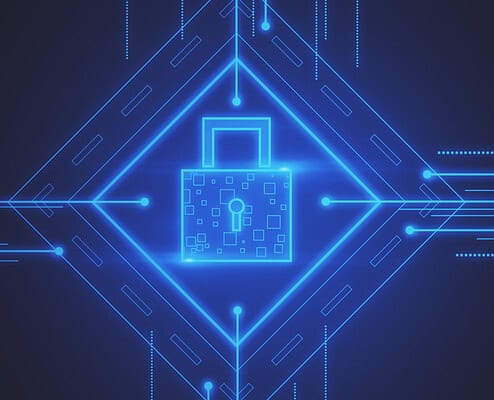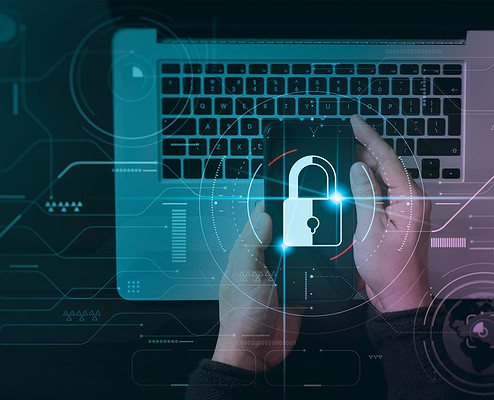
Top Cybersecurity Trends and Threats to Watch Out for in 2023
Recent cybercrime statistics are alarming. For example, cyberattacks occur at least once every 11 seconds—and the cost of cybercrime is expected to hit $10.5 trillion by 2025. Perhaps the most shocking statistic is that small businesses are a hacker’s number one target. This is because they’re less likely than large corporations to have a strong security posture.
With cybercrime growing larger each year, it’s critical that you learn to protect your business. Here are six emerging cybersecurity threats to watch out for in 2023.
Top Cybersecurity Risks
1. Data Breaches
Data breaches are a major cybersecurity threat and should be a top priority for your business to mitigate. Depending on which regulations you’re governed by, the fines and additional penalties can be staggering, meaning that one data breach can be devastating. For this reason, it’s paramount that you stay aware of this threat to cybersecurity trends.
In 2018, Equifax was fined £500,000 under the Data Protection Act of 1998. The violation? A data breach that exposed the personal data and information of 10 million UK citizens.
And Equifax isn’t the only company to get fined by regulatory agencies. Billions of dollars in fines have been handed out to companies over the years. Unfortunately, many business go bankrupt within the first six months following a data breach, and a big reason for that is the hefty financial burden of paying regulatory fines. Some data breaches can be prevented, but not all. The only way to completely protect your business from the consequences of a data breach is to encrypt your data using a secure, end-to-end encryption protocol.
In other words, you need to encrypt your data at rest and in transit. When encrypted data gets stolen, it can’t be read. This means that if your company does experience a data breach, it will be of little to no consequence.
2. Human Error
According to IBM research data published by Forbes, 95% of cybersecurity breaches, including data breaches, are caused by human error. Other studies have come to similar conclusions. This means that no matter how many firewalls you install or how tightly you secure your network, one human error can make your entire organization vulnerable to attack.
The most common types of human error include:
· Misconfigured networks
· Employees who fall for social engineering attacks
· Sharing passwords
· Sharing devices
· Using unsecured, public Wi-Fi networks
· Failing to encrypt sensitive data in transit and/or at rest
· Downloading malware-infested attachments
· Using a weak password that’s easily cracked
· Mistakes caused by tiredness, negligence, or forgetfulness
· Faulty decision-making, such as not addressing a threat early
· Misdelivery of an email containing sensitive information
· Unpatched software
· Failing to update software
Managed security services are an excellent way to combat this threat to cybersecurity trends. First, a security assessment will determine your existing vulnerabilities so they can be fixed. From there, ongoing security training will help you keep your team up to date with current threats and ensure they make the right decisions according to your IT security policy.
3. Social Engineering
Of all the cybersecurity trends and threats out there, social engineering might be the most tricky to avoid. Sometimes workers are tired running on autopilot when they fall for social engineering tricks like phishing attacks.
In a phishing scheme, a victim is sent a dubious email that appears to be from a trusted contact or known sender. The contents of the email either directly request sensitive data or ask the recipient to click on a link that takes them to a web page that asks for sensitive data. The web page will usually look like a familiar, legitimate website, but all the information entered into the web form will be sent to the attacker.
4. Ransomware Attacks
The most insidious cyberattack is a ransomware attack that encrypts all the data on the victim’s hard drive and the hacker demands a ransom to restore that data. This threat against cybersecurity trends is on the rise, and it doesn’t look like it’s slowing down any time soon.
If you have a comprehensive disaster recovery plan, you can shake off a ransomware attack, ignore the demand for a ransom, and start over. However, without a disaster recovery plan, you might have to rebuild from scratch or pay the ransom (which only incentivizes hackers to keep using ransomware).
5. Remote Working
Remote workers pose a significant threat to your organization, and it’s not necessarily intentional. Remote workers often access unsecured, public Wi-Fi networks at places like coffee shops to perform their work—but this can put your organization at risk.
Another potential security issue with remote workers is the fact that other people might have access to their connected devices. Anyone with access to their devices will have access to your company accounts and files.
It’s imperative to have a strong IT policy governing remote workers and their devices to prevent this threat against cybersecurity trends from causing problems for your business. For instance, you’ll want to require the use of antivirus software and a password to protect their device so that nobody else can gain access. You can also run software to manage your remote team’s workstations.
6. Insider Attacks
Insider attacks are a threat to cybersecurity trends that pose a significant risk to your organization—and the trouble is, they can’t be predicted. However, there are some protective measures you can take to prevent this problem. One of the most common insider threats comes from disgruntled employees who either have yet to be fired or have been fired but still have access to the company network or accounts.
It’s important to put several specific measures in place to prevent this type of cybersecurity trend. First, your IT security policy should disallow sharing account logins for any reason. You should also have a procedure in place that disables an employee’s account access while they’re being taken through their exit interview.
Get Cybersecurity Protection From Net3 IT
Our managed security services can help you protect your organization against common cyberthreats and guide you through cybersecurity trends. Whether you need help securing your network, your remote employees, or even if you’re not sure where to start, contact us to learn more about the services we provide.

About Us
Since 2012, Net3 IT has offered enterprise-level IT experience and industry knowledge to help Knoxville businesses make the right decisions. We are committed to our customers’ success by providing cost-effective, high-value IT services, VOIP phone services, and strategic consulting.



